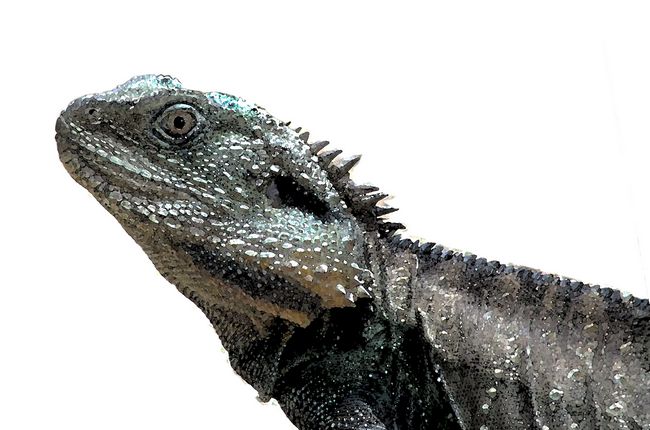Athena Review Image Archive ™
Sauropsid Reptiles

The Eastern Water Dragon (Physignathus lesuerii), a sauropsid reptile.
Sauropsids
(“lizard faces”) is a grouping of fossil reptiles coined by Thomas
Henry Huxley in 1863 to include most fossil and extant reptiles. In the
early 20th century, Sauropsids were contrasted with Therapsids (“beast
faces"), equated with mammal-like reptiles whose fossils were beginning to be
recognized in Late Permian deposits in South Africa.
In the mid 20th century, Alfred Romer distinguished diapsids and anapsids (both reptiles) from synapsids (which include therapsids), the latter deviating from reptiles and ancestral to mammals. Presently, the term synapsid is used as a generic term for non-sauropsid reptiles. The split between the two groups was early (ca. 315 mya), arising not long after reptiles (amniotes) split from amphibians (non-amniotes).
The eastern water dragon (Physignathus lesueurii),
a present-day sauropsid reptile in the order Squamata ("scaled
reptiles"), lives in coastal waters of eastern Australia. It grows
up to 80-90 cm in length, with relatively long and powerful legs and a
strong tail flattened on the sides to assist with swimming. It climbs
trees overhanding the water and if disturbed, will drop into the water
and swim to the bottom, staying under for up to 30 minutes. Its diet is
varied, conisting of small reptiles, worms, frogs, molluscs, insects,
and fruit.
.:
References
Australian Reptile Park, website Reptilepark.com.au
Huxley, T.H. 1863
Romer, A.S. 1956
Copyright © 1996-2020 Rust Family Foundation (All Rights Reserved).